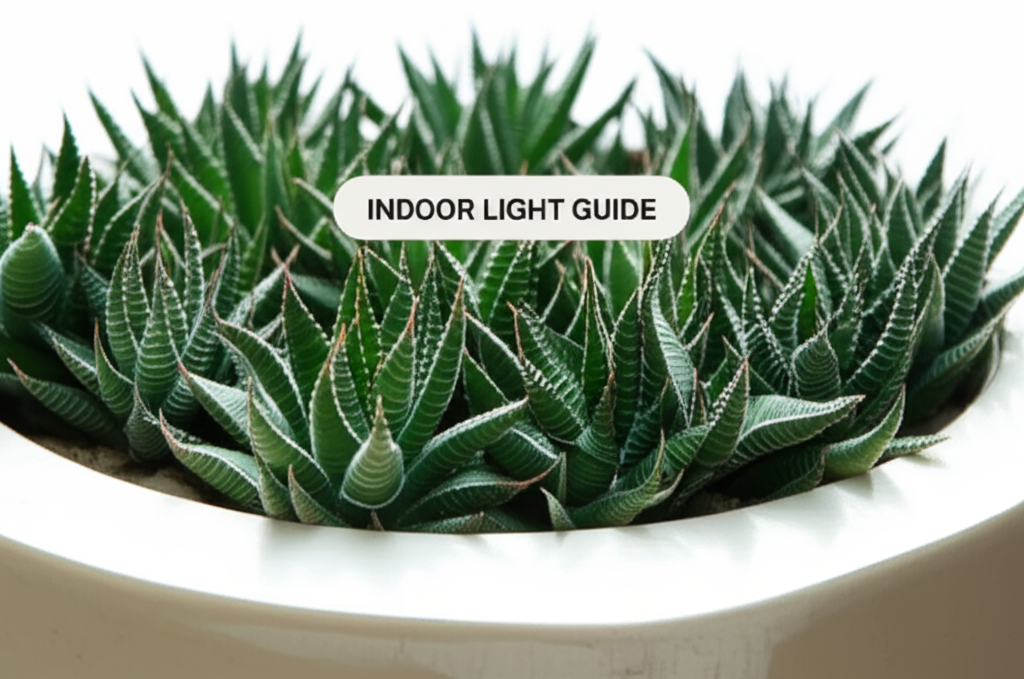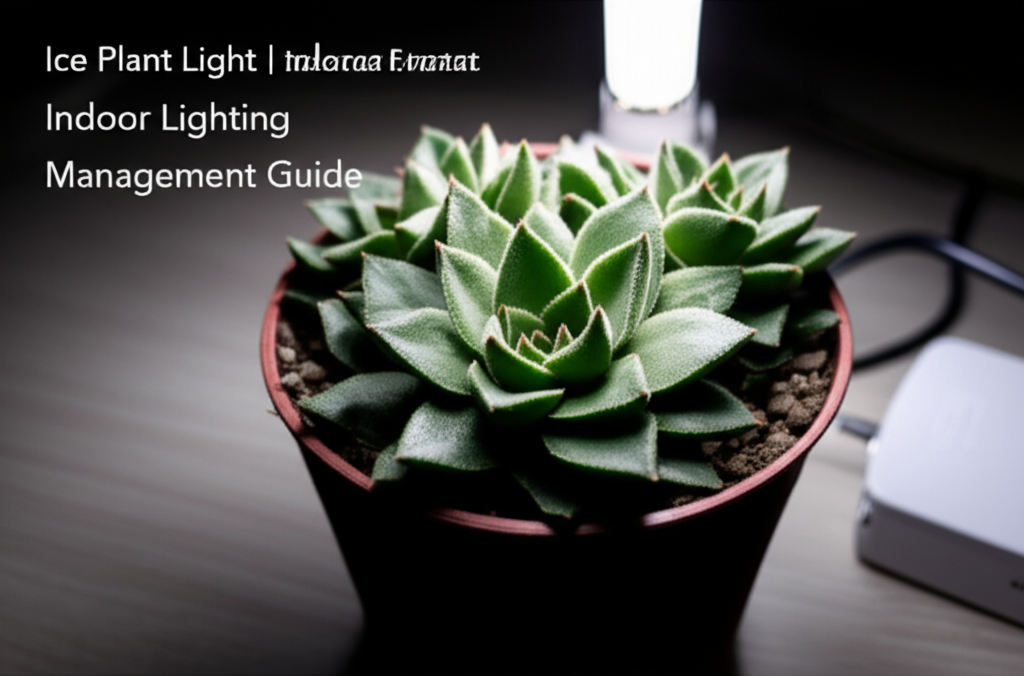The Luminous Life of Ice Plant Succulents Indoors
Ice plant succulents, known for their characteristic shimmering, crystalline epidermal cells that resemble frost, are captivating additions to any indoor garden. These unique plants, belonging to the Aizoaceae family, thrive in environments that mimic their native arid, sunny habitats. For indoor cultivation, understanding and managing their lighting needs is paramount to their health, vibrant growth, and those coveted shimmering ‘ice’ crystals. This guide will delve deep into optimizing the indoor lighting for your ice plant succulent, ensuring it flourishes and continues to be a conversation starter.
Why Lighting is Crucial for Ice Plant Succulents
Light is the primary energy source for succulents, fueling photosynthesis. For ice plants, sufficient light is not just about survival; it’s about expression. Inadequate light leads to:
- Leggy Growth (Etiolation): The plant stretches towards the light source, becoming weak and elongated.
- Loss of Vibrant Color: The characteristic colors, often reds, oranges, and purples, fade.
- Reduced or Absent Crystal Formation: The defining ‘ice’ crystals develop best under intense light.
- Weakened Overall Health: The plant becomes more susceptible to pests and diseases.
Conversely, optimal lighting conditions promote compact growth, intense coloration, and the development of those magical crystalline structures.
Understanding Light Intensity and Duration

Succulents, in general, are sun-loving plants. However, the specific light requirements can vary slightly between different species and even cultivars within the ice plant family. Generally, they prefer bright, indirect light for a significant portion of the day, with some tolerance for direct sunlight, especially during cooler indoor conditions.
Direct vs. Indirect Light: What’s the Difference?
- Direct Light: This is sunlight that falls directly on the plant without any obstruction. While beneficial in their natural habitat, prolonged direct sunlight through a window can act like a magnifying glass, scorching delicate succulent leaves indoors.
- Indirect Light: This is light that has been diffused or reflected, so it’s bright but not harsh. Think of a bright room on a slightly overcast day, or light that has passed through sheer curtains or bounced off a light-colored wall.
The Sweet Spot: Bright, Indirect Light
For most ice plant succulents, the ideal scenario is several hours of bright, indirect light per day, coupled with a few hours of gentle direct morning or late afternoon sun. This balance prevents scorching while providing ample energy for growth and the development of their unique features.
Duration Matters: How Many Hours of Light?
Ice plant succulents generally require at least 4-6 hours of bright light daily. More is often better, up to a point. Aim for a total of 8-12 hours of bright light exposure, which can be a combination of natural and artificial sources.
Natural Lighting Solutions for Indoor Ice Plants
Your home’s natural light is the most accessible and often the most beneficial source of illumination. Understanding your window orientations is key to providing the right light.
Window Orientations and Their Suitability
- South-Facing Windows (Northern Hemisphere): These offer the brightest and warmest light, with direct sun for most of the day. This is often the best option, especially in winter, but requires careful monitoring for scorching in summer months or if the sun is too intense.
- East-Facing Windows: Provide gentle morning sun, which is excellent for succulents. The light is less intense than south-facing windows, making it a safer bet for preventing sunburn.
- West-Facing Windows: Offer intense afternoon sun, which can be quite hot and potentially damaging to succulents, especially during warmer months. If you have a west-facing window, place your ice plant a few feet back from the glass or use a sheer curtain.
- North-Facing Windows: Generally provide the least amount of light and are usually not sufficient for ice plant succulents to thrive, especially without supplemental lighting.
Maximizing Natural Light
Even with the “perfect” window, you can employ strategies to maximize the light your ice plant receives:
- Clean Your Windows Regularly: Dust and grime can significantly reduce light penetration.
- Avoid Obstructions: Ensure nothing is blocking the light from reaching your plant, both inside and outside the window.
- Rotate Your Plant: Turn your pot 180 degrees every few days to ensure all sides of the plant receive even light, promoting balanced growth.
- Place Plants Closer to the Window: The intensity of light diminishes with distance from the window.
When Natural Light Isn’t Enough: The Role of Grow Lights
In many indoor environments, especially during shorter days or in homes with limited natural light, supplemental lighting is essential. Grow lights are specifically designed to emit the light spectrum plants need for photosynthesis.
Types of Grow Lights for Succulents
- LED Grow Lights: These are highly efficient, energy-saving, and offer a full spectrum of light. They produce less heat than other types, reducing the risk of scorching. LED technology has advanced significantly, offering excellent results for succulents.
- Fluorescent Grow Lights (T5 or T8): These are a more affordable option and can be effective, especially for succulents that don’t require extremely high light intensity. They run cooler than incandescent bulbs.
- High-Intensity Discharge (HID) Lights: While powerful, HIDs (like Metal Halide or High-Pressure Sodium) are generally overkill for most home succulent growers and produce a lot of heat, requiring careful management.
Choosing the Right Spectrum
Succulents benefit from a balanced light spectrum, with emphasis on blue and red wavelengths for vegetative growth and flowering. “Full-spectrum” grow lights are generally the best choice as they mimic natural sunlight.
Using Grow Lights Effectively
- Distance: The ideal distance between the grow light and your plant depends on the light’s wattage and type. As a general rule, start with the light about 6-12 inches above the plant and adjust based on your plant’s response. Too close can cause burning; too far reduces effectiveness.
- Duration: Supplement natural light with grow lights for 8-12 hours per day. You can set timers to automate this process.
- Placement: Position the grow light directly above the plant to ensure even coverage. If using multiple plants, a larger panel or bar light might be more efficient.
- Observe Your Plant: The best indicator is your plant. If it starts stretching, it needs more light. If leaves appear bleached or scorched, the light is too close or too intense.
Key Facts and Comparisons: Natural vs. Artificial Light
Understanding the pros and cons of each light source will help you make informed decisions for your ice plant succulent.
| Feature | Natural Light | Grow Lights (LED) |
|---|---|---|
| Intensity | Variable (depends on window, time of day, season) | Consistent and controllable |
| Spectrum | Full spectrum, natural | Customizable, full-spectrum options available |
| Cost | Free | Initial investment, but energy efficient |
| Heat Output | Can increase ambient room temperature | Generally low heat output, reducing scorch risk |
| Availability | Dependent on home location and window access | Available anytime, anywhere |
| Potential Drawbacks | Inconsistent, risk of scorching in direct sun, limited in low-light homes | Requires setup, can be an eyesore if not integrated well |
Troubleshooting Lighting Issues
Even with the best intentions, lighting problems can arise. Recognizing the signs and knowing how to correct them is vital.
Signs of Insufficient Light
- Stretched, thin stems with widely spaced leaves.
- Pale green or yellowish leaves.
- Lack of vibrant colors (reds, oranges, purples).
- No development of the characteristic ‘ice’ crystals.
- Plant leaning heavily towards a window.
Signs of Excessive Light (Sunburn)
- Brown, black, or white patches on leaves.
- Crispy or dry-looking leaf edges.
- Leaves appearing bleached or faded, especially in direct sun.
- Wilting or softening of leaves in intense direct light.
Steps to Correct Lighting Issues
| Problem | Solution |
|---|---|
| Insufficient Light |
|
| Excessive Light (Sunburn) |
|
Seasonal Lighting Considerations
The intensity and duration of natural light change throughout the year. Adapting your lighting management to these seasonal shifts is crucial for maintaining your ice plant’s health.
Winter
- Reduced Natural Light: Days are shorter, and the sun’s angle is lower, meaning less intense light.
- Action: Move plants closer to south-facing windows. Supplement with grow lights if necessary to ensure 8-12 hours of bright light. Avoid overwatering as growth slows in cooler, less light conditions.
Spring
- Increasing Light: Days lengthen, and the sun’s intensity increases.
- Action: Gradually reintroduce plants to brighter conditions. If they’ve been under grow lights, slowly decrease their duration or intensity. Monitor for signs of sunburn as the sun becomes stronger.
Summer
- Peak Sunlight Intensity: The sun is at its strongest, and days are long.
- Action: Many ice plants will appreciate bright, indirect light during the hottest parts of the day to prevent scorching. East-facing windows are often ideal. If using grow lights, you might be able to reduce their usage. Ensure good air circulation.
Autumn
- Decreasing Light: Days shorten, and sunlight intensity begins to wane.
- Action: Similar to spring, be prepared to increase supplemental lighting as natural light diminishes. Monitor plants for any signs of stretching, indicating they need more light.
Enhancing Crystal Formation with Light
The ethereal crystalline structures, or ‘papillae’, that give ice plants their name are a direct response to environmental stress, particularly light intensity and drought. Adequate light is a major trigger for their development and vibrant coloration.
- Intense Light: Bright light, especially direct sunlight (when acclimatized and not scorching), encourages the plant to produce more papillae as a protective mechanism against UV radiation and dehydration.
- Temperature Fluctuations: While not directly a light factor, good light often coincides with temperature fluctuations (day/night), which also play a role in coloration and crystal development.
- Proper Watering: Allowing the soil to dry out between waterings (but not to the point of wilting) also signals stress that can encourage papillae formation, especially under good light.
Therefore, to achieve those sparkling, jewel-like appearances, prioritize providing your ice plant succulent with as much bright light as it can handle without showing signs of stress.
Conclusion: A Brighter Future for Your Ice Plant
Successfully managing the indoor lighting for your ice plant succulent is a journey of observation and adjustment. By understanding the nuances of natural light, leveraging the power of grow lights when needed, and paying close attention to your plant’s signals, you can create an environment where it not only survives but truly thrives. The reward for your efforts will be a compact, vibrantly colored specimen adorned with its signature shimmering ‘ice’ crystals, bringing a touch of arid beauty and sparkle into your home. Consistent monitoring and a willingness to adapt your strategy based on the seasons and your specific environment will ensure your ice plant remains a healthy and visually stunning part of your indoor collection.


